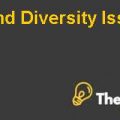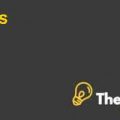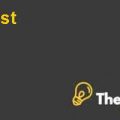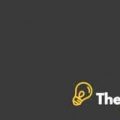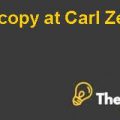
Introduction
This was about the AQR, which was founded in 1998 and located in Greenwich, CT. Mr. Clifford Asness, David Kabiller, Robert Krail, and John Liew , had worked together to perform and set out the basis of founding different hedge funds opportunities for the investors with a view to yield better mean returns than the other hedge funds offered by competitors.
Problem Diagnosis
Since its introduction, the Delta fund have been performing quite well, but the management of the AQR has estimated that the performance of the Delta fund would decline, as the growth in the Delta’s AUM had been very uncertain. The management believes that they are facing three different problems.
The major problem for the management is to decide which combination of management and performance fees would be better. The second challenge is which marketing strategy is to be followed, because the market for replication hedge is continuously emerging. These strategies are almost opposite to the Delta specifications. Another problem is the estimated track record based on the past trends.
Question:
How and Why DELTA was developed
It was in the requirement book of hedge fund, that every open end hedge fund has to register with the SEC and had to provide its investors over the calculations of daily net asset values. Many of the investors found that the investment in the hedge fund were exposed to the great amount of risk, and most of the hedge funds only allowed redemption on certain dates.
The fees charged over the investment was yet another concern for the investors because of the reason that the investors were keen to obtain similar benefits for comparatively lower management and performance fees.
The management the AQR was already working hard for exploring the possibilities of liquid, cost effective and transparent way. For this reason, they had initially introduce the replication hedge funds, but soon came to know that, these funds have entirely different exposure to risk and the fund needed to have delivering vulnerability to the systematic and organized factor according to the industry.
On the other hand, the industry competitors of AQR were focusing on the same product. While the approach was different, as the competitors were focusing on the top-down approach and AQR was focusing on the bottom up approach, with a view of providing significant risk adjusted returns rather than simple replication index, by providing liquid hedge funds strategies that must be uncorrelated with the traditional market funds and bundling these funds in to a well correlated and well-constructed into a single portfolio.
Question:
Rolling Regression
Based on the data provided in the case study, we are required to estimate the returns for three months by using 5 year rolling regression analysis. We have calculated the monthly returns on the basis of last 60 months rolling and come up with the average values of 1.75% return in January for HFRI Hedge Fund, 1.78% in February and 1.69% in March.
On the other hand, after analyzing the past trends of HFRI Fund of Fund Hedge and came up with the forecasted returns for January, February and March as 0.87%, 0.87% and 0.87% respectively.
While analyzing HFRI Fund Weighted Hedge Fund Total past records and data provided, with the help of 5 year rolling regression analysis, we found that, on average basis, the fund would yield a ratio of around 1.20%, 1.20% and 1.15% for January, February and March respectively.
Question:
Importance of Management and Performance Fees
After analyzing the exhibits provided and the structure for management and performance fees structure, we have calculated different fees structure and fess to be borne by the investors. Based on the calculations shown below, we have found that, if in case the management of the company wants to set a fees structure of 2% management fees would yield an annual average return of around 10.15% against the normal average of 10.35% for the 2001 to 2011.
In a similar way, in the case of fees structure of 1% management fees and 10% performance fees on all greater than zero returns would yield an annual average of 12.14%, which was 1.79% more than the normal annual average return and 1.99% more than the above fees structure....................................
This is just a sample partial case solution. Please place the order on the website to order your own originally done case solution.
In the summer of 2008, AQR Capital Management is considering the launch of a new strategy hedge funds. DELTA offers a portfolio to offer investors exposure to a basket of nine major strategies of hedge funds. DELTA strategy would be innovative in two ways. First, in terms of its structure, AQR will perform these basic strategies with clearly defined investment process, with the aim to bring the impact of a well-diversified portfolio of hedge fund strategies. Second, from the point of view of its duties, the new strategy DELTA will charge investors a relatively low fee: 1% management fees plus 10% of performance over the monetary constraint (or, conversely, the management fee of 2% only). This fee structure has been low relative to the industry, where the 2% management fees plus 20% of the performance is often not an obstacle, was standard. "Hide
by Daniel B. Bergstresser, Lauren H. Cohen, Randolph B. Cohen, Christopher Malloy Source: Harvard Business School 18 pages. Publication Date: October 27, 2011. Prod. #: 212038-PDF-ENG

